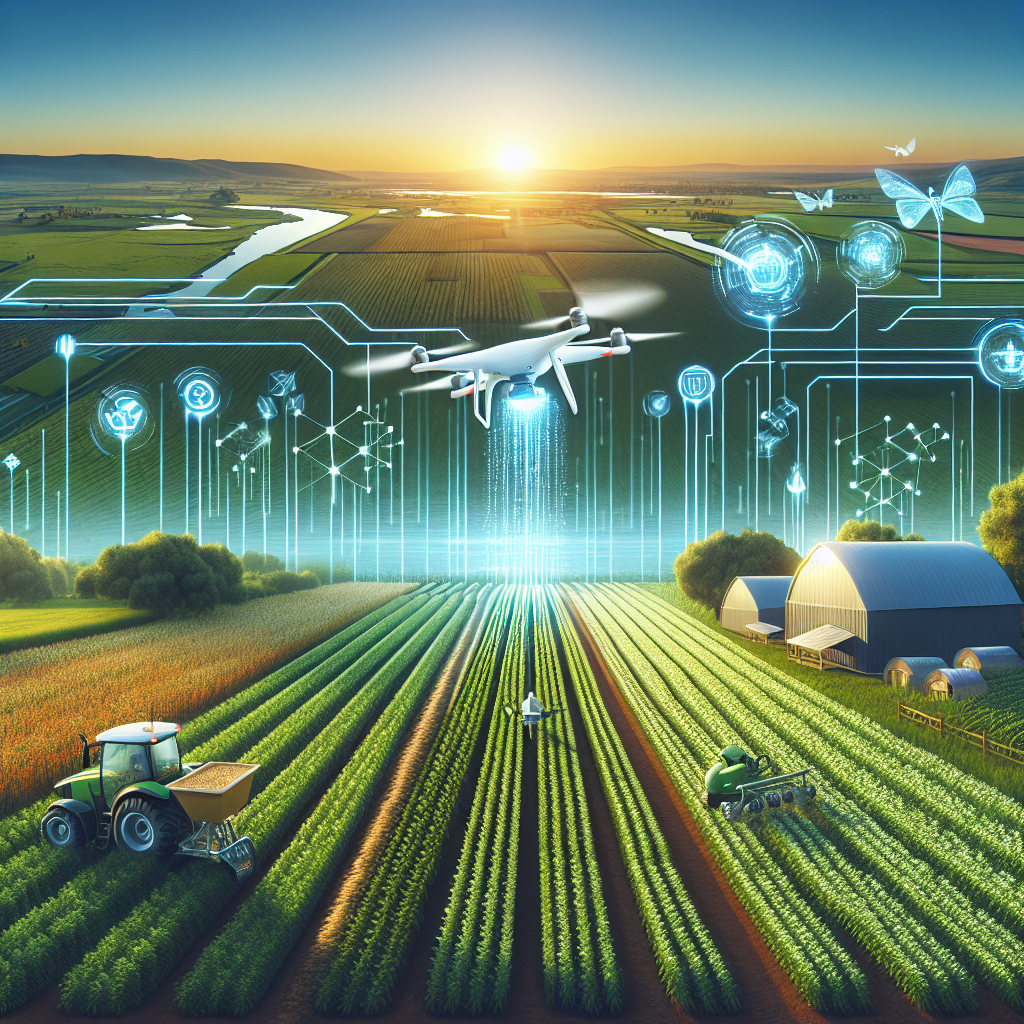Artificial intelligence (AI) has been revolutionizing various industries, and agriculture is no exception. With the increasing global population and the challenges posed by climate change, farmers are under pressure to produce more with fewer resources. AI technologies offer a way to enhance crop yields, optimize resource management, and improve decision-making in agriculture. In this article, we will explore how AI deployment in agriculture is transforming the way crops are grown and harvested.
AI technologies in agriculture include machine learning, computer vision, drones, and robotics. These technologies are used to collect and analyze data, make predictions, and automate tasks that were traditionally done manually. By leveraging AI, farmers can gain valuable insights into their crops, soil conditions, and weather patterns, enabling them to make more informed decisions and increase productivity.
One of the key benefits of AI deployment in agriculture is the ability to monitor crops in real-time and detect early signs of disease, pests, or nutrient deficiencies. For example, drones equipped with cameras and sensors can fly over fields to collect data on crop health and growth. Machine learning algorithms can then analyze this data to identify potential issues and recommend appropriate actions. By detecting problems early on, farmers can take timely measures to prevent crop losses and maximize yields.
AI technologies can also help farmers optimize their use of resources such as water, fertilizers, and pesticides. By analyzing data on soil moisture levels, weather forecasts, and crop growth patterns, AI systems can recommend precise irrigation schedules and fertilizer applications. This not only reduces waste and environmental impact but also improves crop quality and yield. For example, AI-powered irrigation systems can adjust watering levels based on real-time data, ensuring that plants receive the right amount of water at the right time.
In addition to monitoring crops and optimizing resource management, AI technologies can also assist in crop harvesting and post-harvest operations. For example, robotic harvesters equipped with computer vision systems can accurately identify and pick ripe fruits or vegetables, reducing labor costs and increasing efficiency. AI-powered sorting and grading systems can also classify produce based on quality and size, enabling farmers to optimize their sales and distribution processes.
Overall, AI deployment in agriculture offers a wide range of benefits, including:
1. Increased crop yields: By monitoring crops in real-time, detecting issues early on, and optimizing resource management, AI technologies can help farmers increase their yields and improve productivity.
2. Reduced environmental impact: By using resources more efficiently and minimizing waste, AI deployment in agriculture can help reduce the industry’s environmental footprint and promote sustainable farming practices.
3. Improved decision-making: AI systems provide farmers with valuable insights and recommendations, enabling them to make more informed decisions and respond quickly to changing conditions.
4. Labor savings: AI-powered technologies automate repetitive tasks such as monitoring crops, applying fertilizers, and harvesting produce, reducing the need for manual labor and freeing up farmers to focus on other aspects of their operations.
Despite the numerous benefits of AI deployment in agriculture, there are also challenges and concerns that need to be addressed. These include:
1. Data privacy and security: AI technologies rely on vast amounts of data collected from farms, which raises concerns about data privacy and security. Farmers need to ensure that their data is protected and used responsibly by AI systems.
2. Cost of implementation: While AI technologies have the potential to increase productivity and profitability, the initial cost of implementation can be a barrier for some farmers, especially small-scale producers.
3. Lack of technical expertise: AI deployment in agriculture requires specialized knowledge and skills, which may be lacking in some farming communities. Training and support are essential to help farmers adopt and use AI technologies effectively.
4. Regulatory challenges: As AI technologies become more widespread in agriculture, there may be regulatory challenges related to data ownership, liability, and ethical considerations. Policymakers need to establish clear guidelines to ensure the responsible use of AI in farming.
FAQs:
Q: How can AI technologies help farmers optimize their use of resources?
A: AI technologies can analyze data on soil conditions, weather patterns, and crop growth to recommend precise irrigation schedules, fertilizer applications, and pest control measures. By using resources more efficiently, farmers can reduce waste and environmental impact while improving crop yields.
Q: What are some examples of AI-powered technologies used in agriculture?
A: Examples of AI-powered technologies in agriculture include drones for crop monitoring, robotic harvesters for picking fruits and vegetables, and machine learning algorithms for predicting crop yields and detecting diseases. These technologies help farmers automate tasks, make informed decisions, and increase productivity.
Q: What are the benefits of AI deployment in agriculture?
A: The benefits of AI deployment in agriculture include increased crop yields, reduced environmental impact, improved decision-making, and labor savings. By leveraging AI technologies, farmers can optimize their operations, respond to challenges more effectively, and enhance their overall productivity and profitability.
Q: What are the challenges of AI deployment in agriculture?
A: Challenges of AI deployment in agriculture include data privacy and security concerns, cost of implementation, lack of technical expertise, and regulatory challenges. Addressing these challenges is essential to ensure the responsible and effective use of AI technologies in farming.
In conclusion, AI deployment in agriculture is transforming the way crops are grown and harvested, offering numerous benefits for farmers, the environment, and society as a whole. By leveraging AI technologies, farmers can increase their yields, optimize resource management, and make more informed decisions. However, challenges such as data privacy, cost, technical expertise, and regulations need to be addressed to ensure the responsible and effective use of AI in agriculture. With the right support and guidance, AI technologies have the potential to revolutionize the agricultural industry and help farmers meet the growing demands of a changing world.

